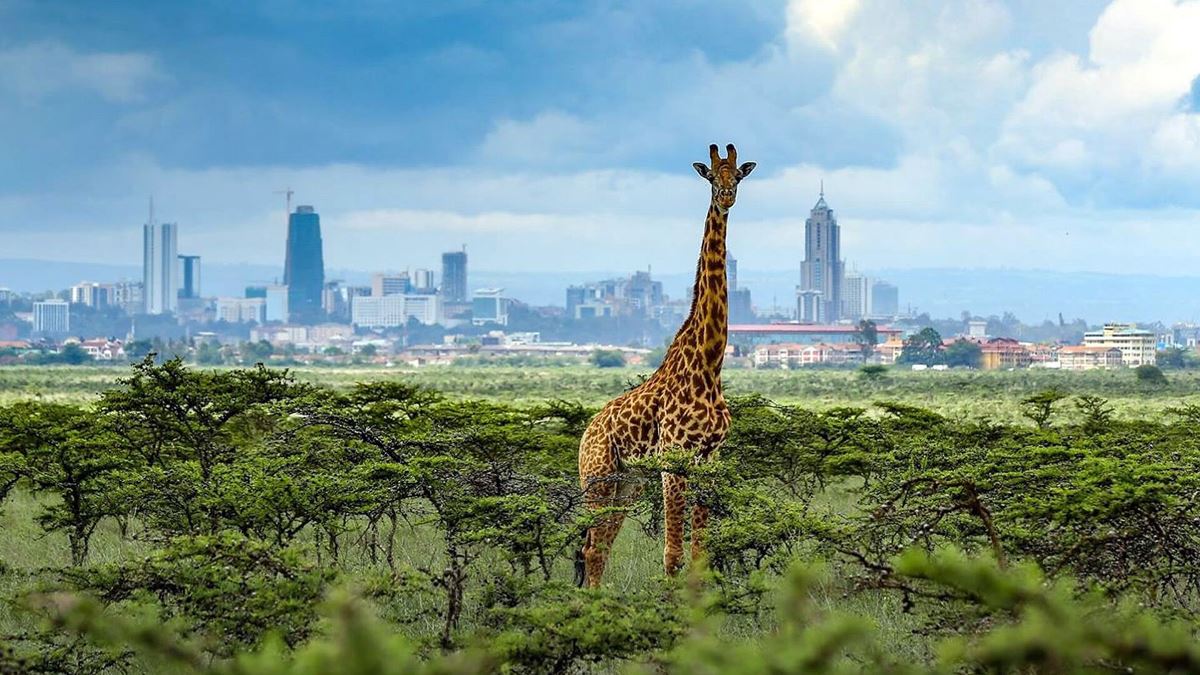Kenya
Kenya, officially the Republic of Kenya (Swahili: Jamhuri ya Kenya), is a country in East Africa. With a population of more than 47.6 million in the 2019 census, Kenya is the 28th-most-populous country in the world and 7th most populous in Africa.
Kenya's capital and largest city is Nairobi, while its oldest and second-largest city, is the major port city of Mombasa, situated on Mombasa Island in the Indian Ocean and the surrounding mainland. Mombasa was the capital of the British East Africa Protectorate, which included most of what is now Kenya and southwestern Somalia, from 1889 to 1907. Other important cities include Kisumu and Nakuru.
Kenya is bordered by South Sudan to the northwest, Ethiopia to the north, Somalia to the east, Uganda to the west, Tanzania to the south, and the Indian Ocean to the southeast.
LOCATION OF KENYA – COUNTRY IN EAST AFRICA
Kenya is a country located in East Africa, known for its diverse landscapes, rich wildlife, and vibrant culture.
Kenya lies on the equator, giving it a unique climate that varies from tropical along the coast to arid in the interior regions. It is bordered by five countries:
North: Ethiopia and South Sudan
West: Uganda
South: Tanzania
East: Somalia
To the southeast, Kenya has a coastline along the Indian Ocean, providing beautiful beaches and important port cities like Mombasa.
HISTORY OF KENYA - COUNTRY IN EAST AFRICA
Kenya, located in East Africa, has a rich and diverse history that spans millions of years.
Kenya during the prehistoric Period
Kenya is one of the cradles of humankind, with evidence of early human ancestors dating back millions of years. Fossil discoveries in the Great Rift Valley, particularly at sites like Koobi Fora, have provided significant insights into human evolution. Notable finds include remains of Australopithecus and Homo habilis, which have helped scientists understand the development of early humans.
Kenya’s Early Inhabitants and Kingdoms in Kenya
The earliest inhabitants of Kenya were hunter-gatherer communities, including the Twa and other indigenous groups. By the first millennium AD, Bantu-speaking peoples had migrated into the region, bringing with them agricultural practices and ironworking technology. The Nilotic-speaking peoples, such as the Maasai and Luo, also migrated into Kenya during this period.
The Wanga Kingdom, established in the late 17th century, was one of the prominent pre-colonial states in Kenya. It was a centralized kingdom led by the Nabongo (king) and played a significant role in the region's history.
Swahili Coast and Trade in Kenya
From the 8th century onwards, the coastal region of Kenya became part of the Swahili Coast, a network of city-states engaged in trade across the Indian Ocean. Arab, Persian, Indian, and later Portuguese traders established settlements along the coast, leading to a rich cultural and economic exchange. Mombasa and Lamu were among the key Swahili city-states that flourished during this period.
Kenya during the Colonial Era
In the late 19th century, European powers began to explore and colonize the interior of Kenya. The British established the East Africa Protectorate in 1895, which later became the Kenya Colony in 1920. The colonial administration introduced cash crop farming, built infrastructure, and imposed new social and economic systems. However, this period also saw the displacement of local communities and the exploitation of resources.
Kenya’s Struggle for Independence
The demand for independence grew in the mid-20th century, leading to the Mau Mau Uprising (1952-1960), a significant armed resistance against British colonial rule. The uprising was marked by violent clashes and widespread repression. Despite the challenges, the movement galvanized support for independence.
Kenya’s Independence and Early Post-Independence Period
Kenya gained independence from Britain on December 12, 1963, with Jomo Kenyatta as its first Prime Minister and later President. The country became a republic in 1964. Kenyatta's government focused on nation-building, economic development, and consolidating power. However, his tenure also faced challenges, including ethnic tensions and political opposition.
Moi Era in Kenya
After Kenyatta's death in 1978, Daniel arap Moi became President. Moi's rule was characterized by a centralized and authoritarian approach, with the Kenya African National Union (KANU) as the dominant party. The 1980s and 1990s saw political repression, economic challenges, and corruption scandals, such as the Goldenberg scandal. However, Moi also faced increasing pressure for political reforms.
Multi-Party Democracy and Recent History of Kenya
In 1991, Kenya transitioned to a multi-party political system. Moi won the 1992 and 1997 elections, but his tenure was marred by allegations of electoral fraud and political violence. In 2002, Mwai Kibaki won the presidential election, marking the end of Moi's rule. Kibaki's presidency focused on economic reforms and infrastructure development but was also marked by the disputed 2007 election, which led to widespread violence and a political crisis.
In 2013, Uhuru Kenyatta, the son of Jomo Kenyatta, was elected President. His tenure has seen efforts to address corruption, promote economic growth, and improve infrastructure. However, challenges such as political tensions, ethnic divisions, and economic inequality remain.
Kenya's history is a testament to its resilience and ability to overcome adversity. From its ancient human ancestors to its modern nation-state, Kenya has undergone significant transformations. The country's rich cultural heritage, diverse landscapes, and dynamic political history continue to shape its identity and future.
| Languages spoken | English, Swahili |
|---|---|
| Currency used | Kenyan shilling (KES) |
| Area (km2) | 580,367 km2 (224,081 sq mi) |
| Country name | Republic of Kenya (Jamhuri ya Kenya) |








